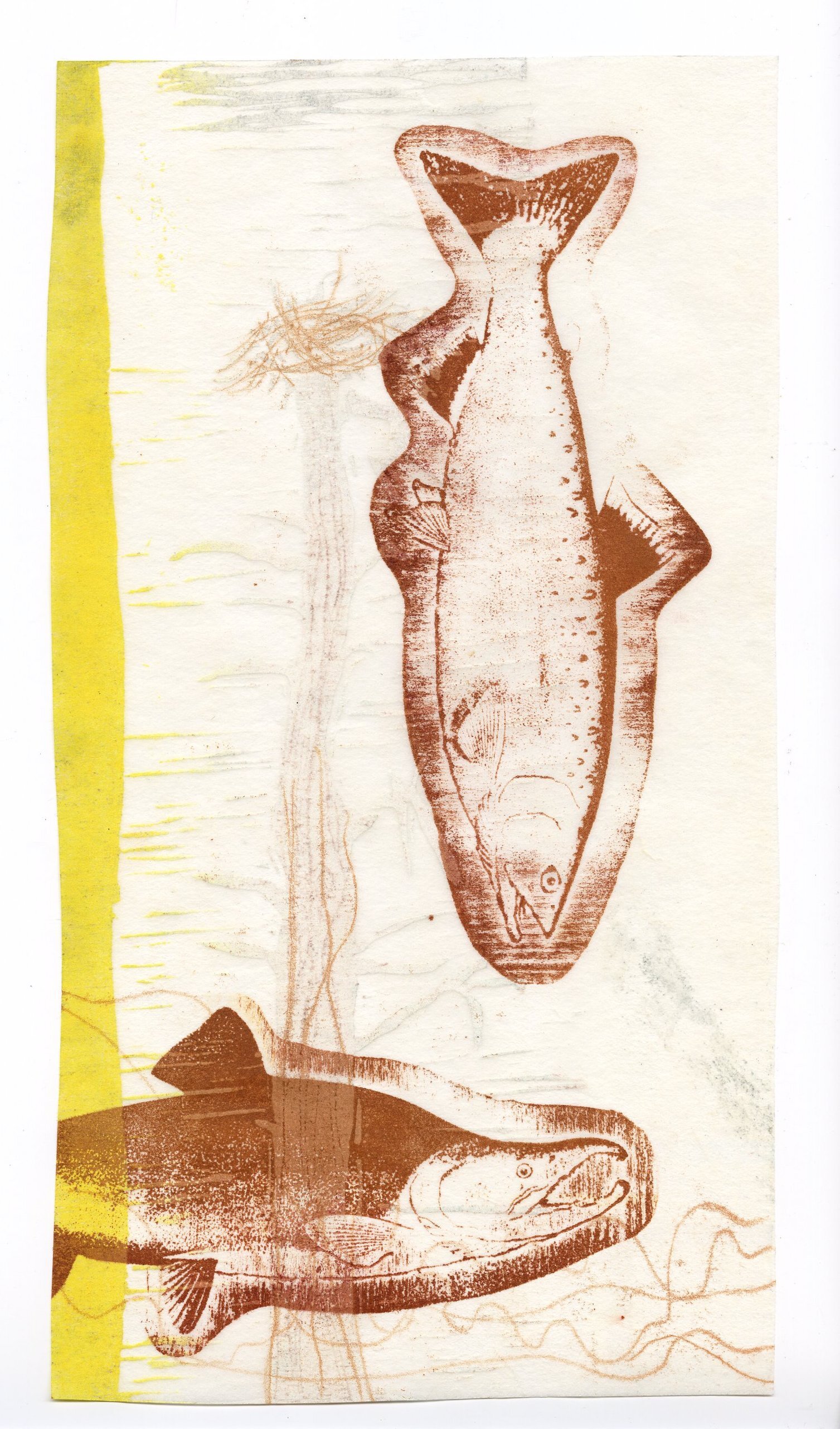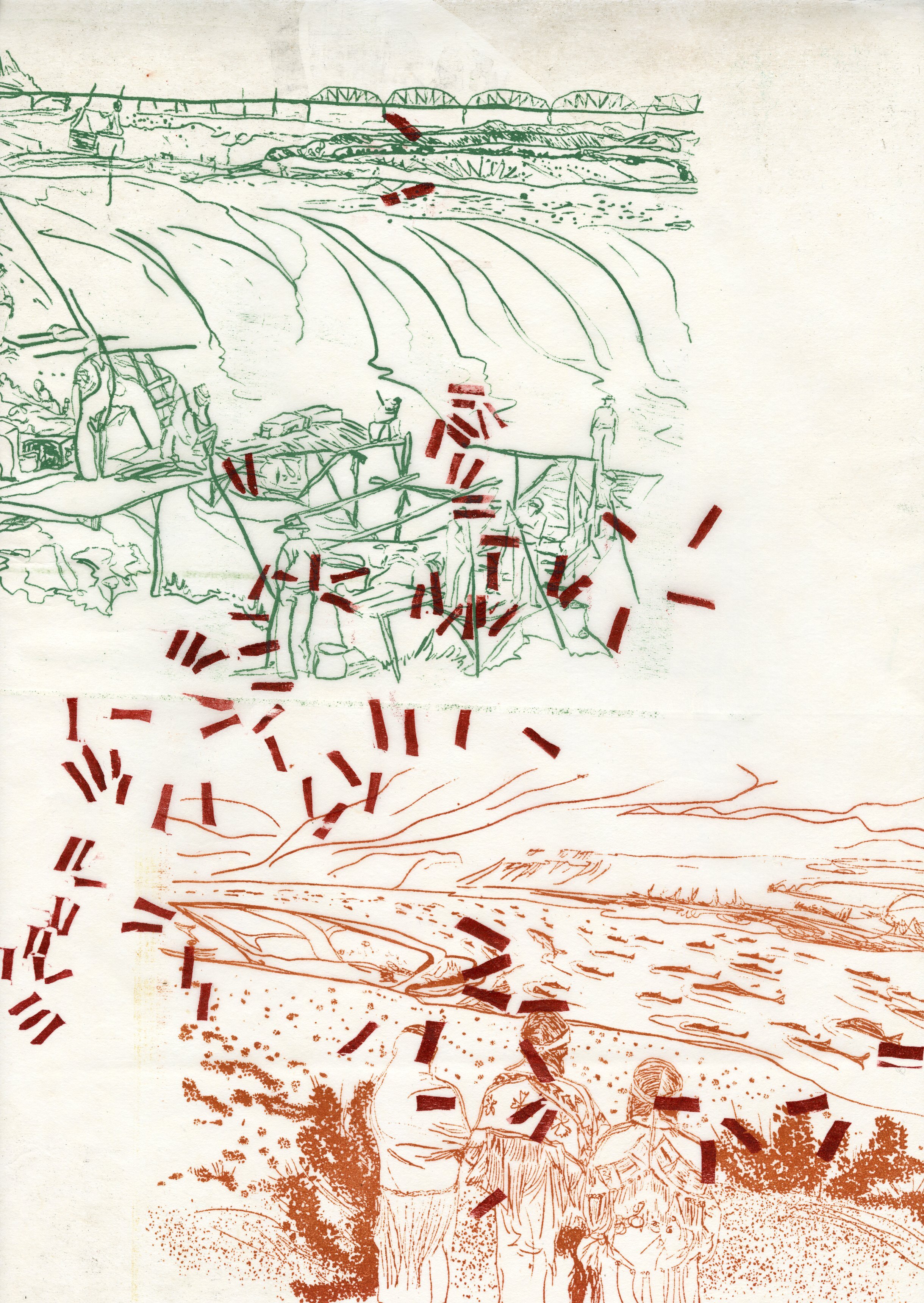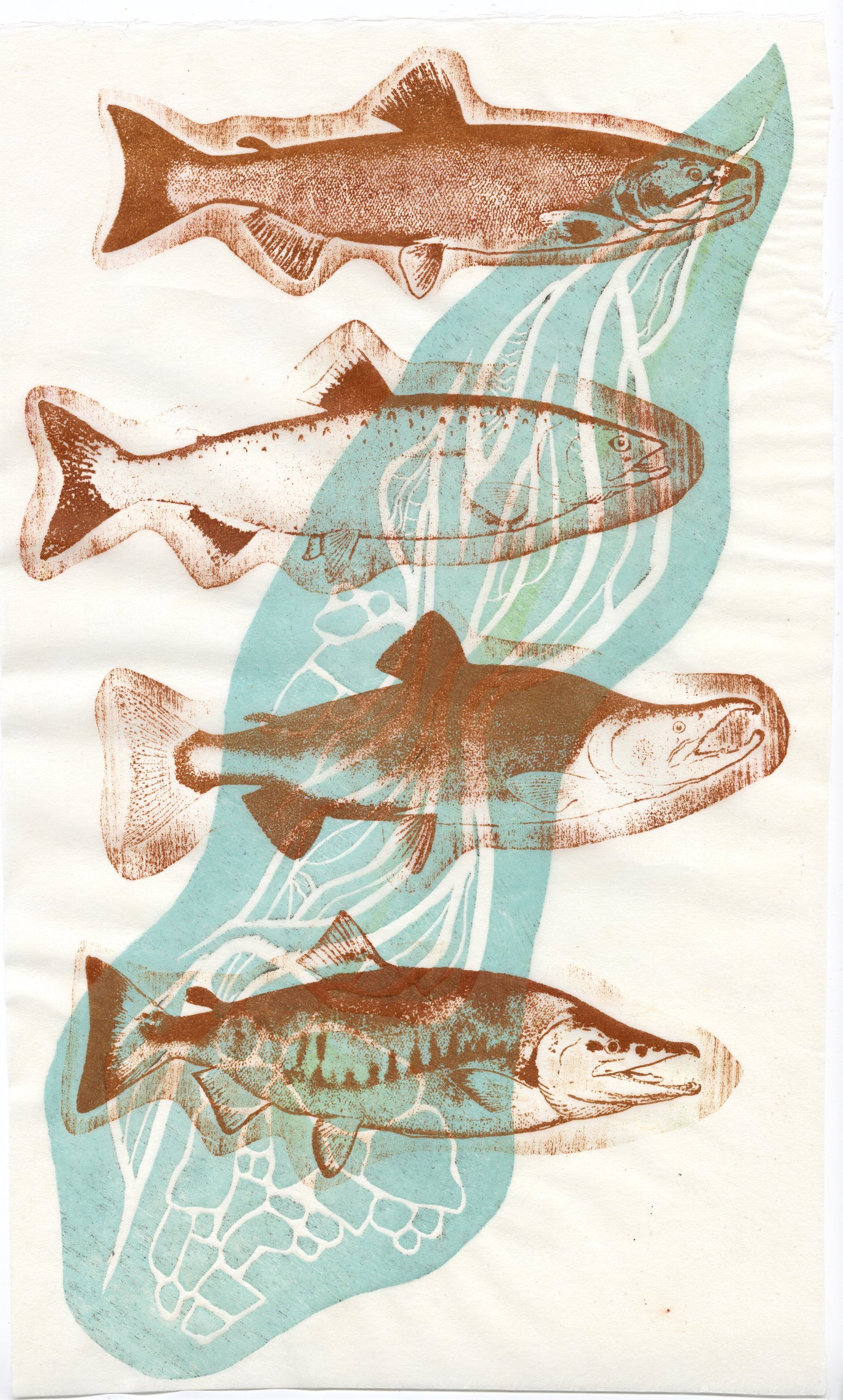Methow River
When a mineral company began exploring Flagg Mtn at the headwaters of the Methow River with intent to create an open-pit copper mine, the valley fought back. Methow Headwaters ran a grassroots campaign that galvanized the people of the Methow to express what they love about the river, and to guard this place from the contamination a large mine would produce. In March of 2019, the community found their success in the federal Public Lands ruling which included the Methow Headwaters bill. This place is now protected from industrial-scale mining forever, a huge win for the watershed and community.
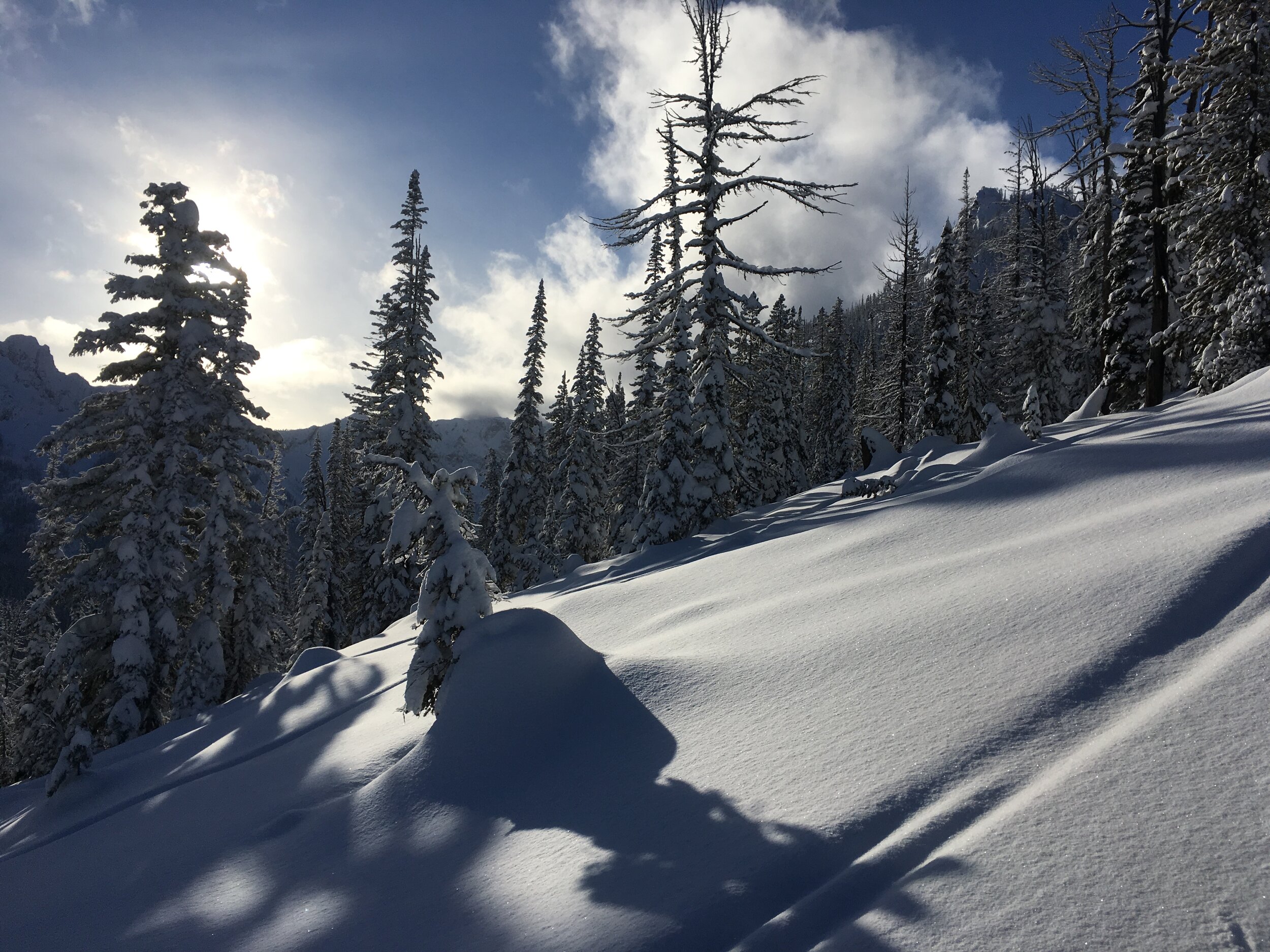
No place for a mine.
While the campaign was ongoing, I carved, printed, sliced and pasted together the story of this river. My blocks are each based on a different aspect— mountains, maps, historical texts— but the full spiral tells a story of water and time converging to the present uncertain moment.
Sekishu and gampi paper, 2’ x 3’ spiral.
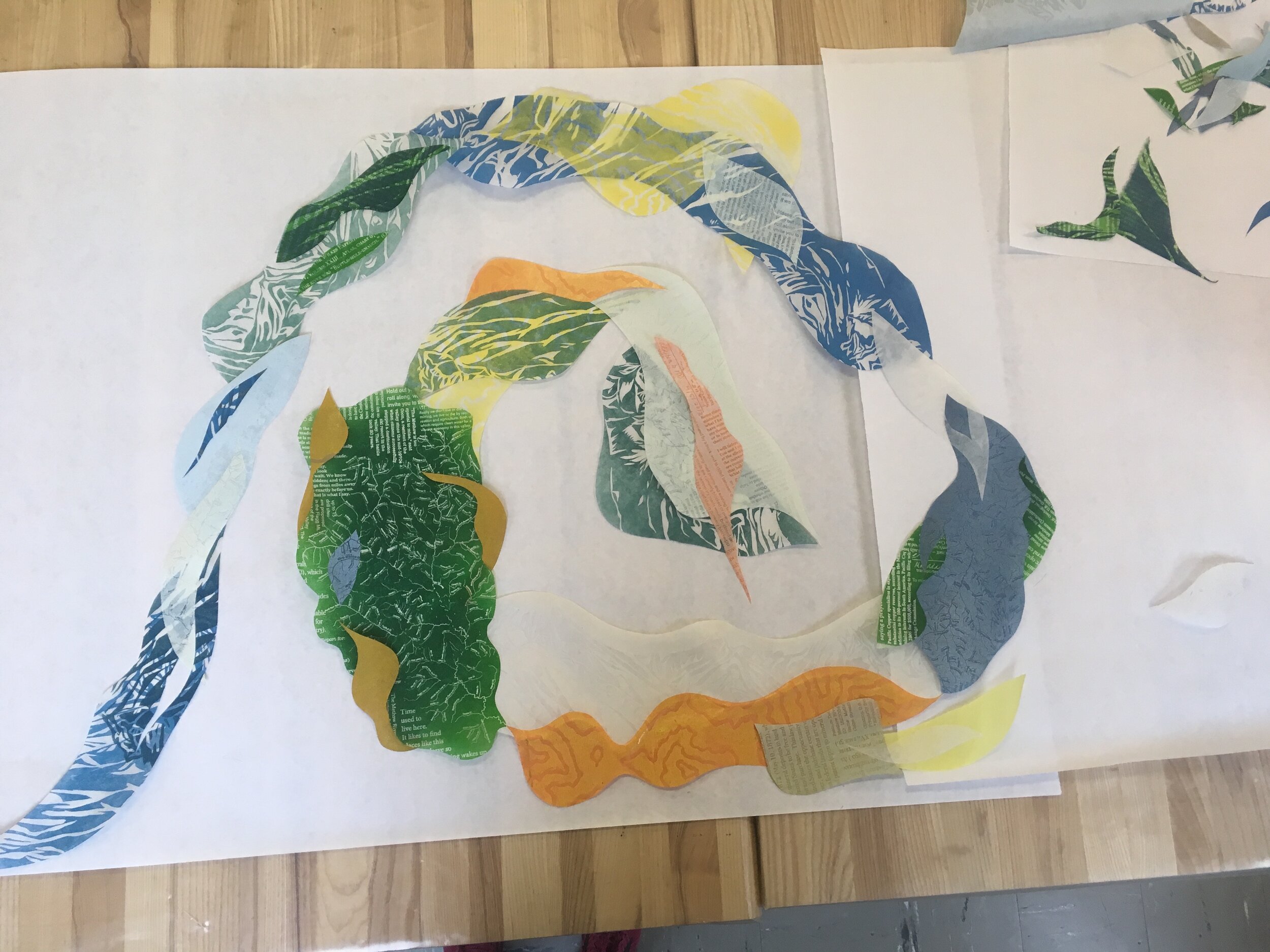
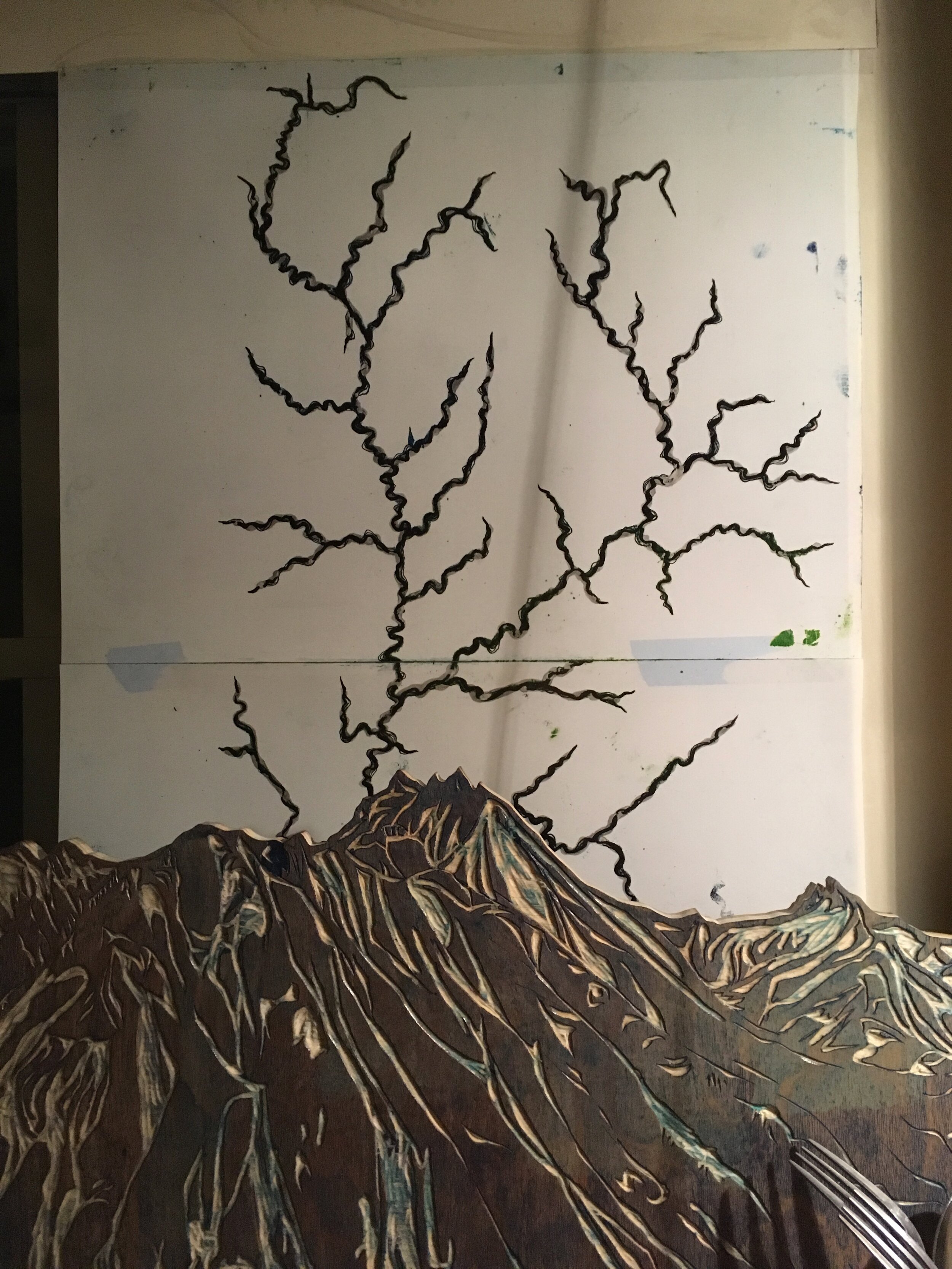
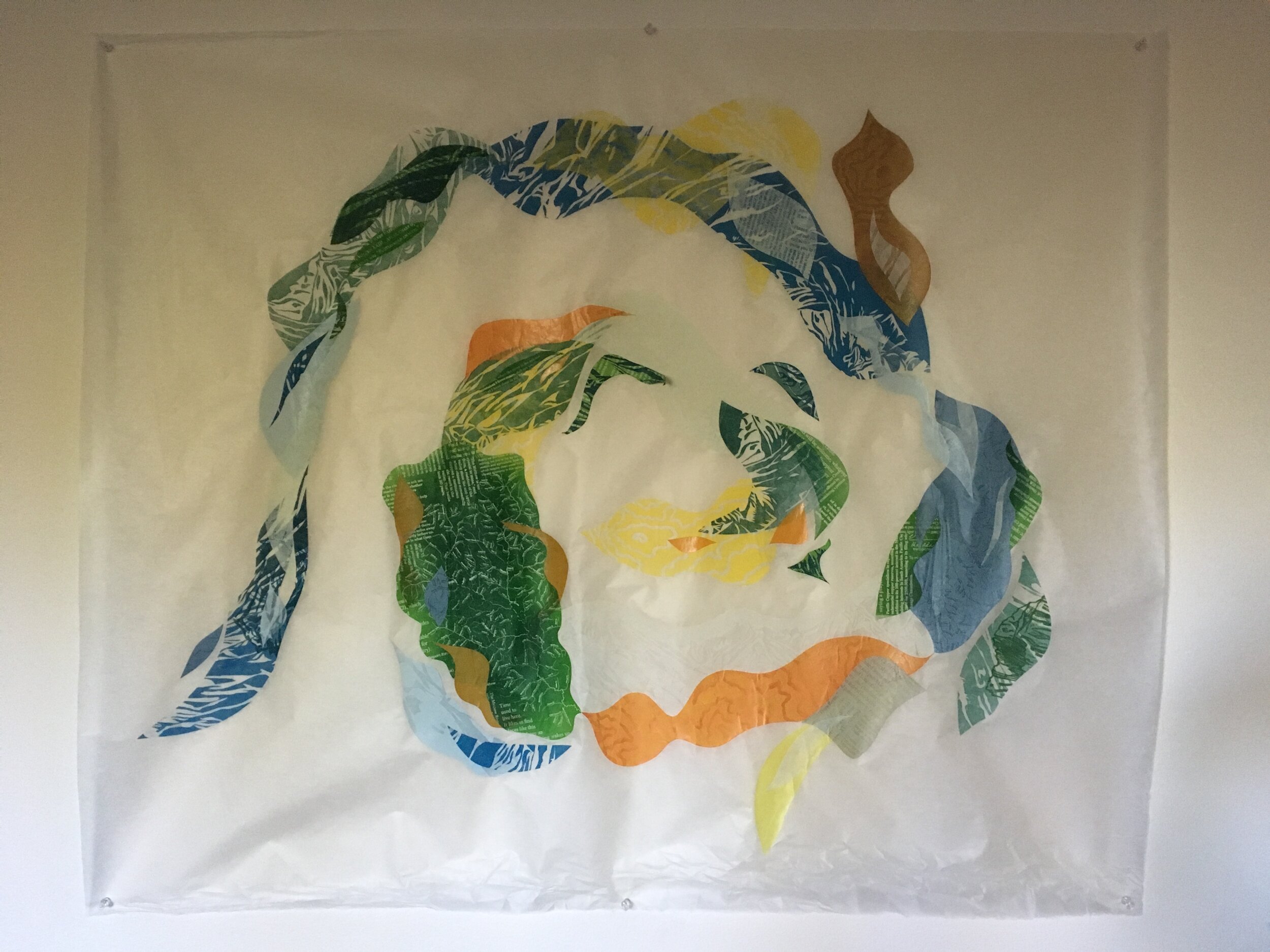

Columbia River
The free and beloved Methow flows into the once-mighty Columbia. This giant of the Pacific Northwest is now harnessed by 19 hydro-electric dams, providing the region with power and irrigation water. These immense concrete structure have fundamentally changed the cultures, ecology and flows of the Columbia River.
Seven dams wait downstream of where the Methow meets the Columbia’s current, yet salmon still return every year to spawn. However, they do so in dwindling numbers, a tiny shadow of the 30 million salmon that once tasted the Columbia’s freshwater and followed it home.
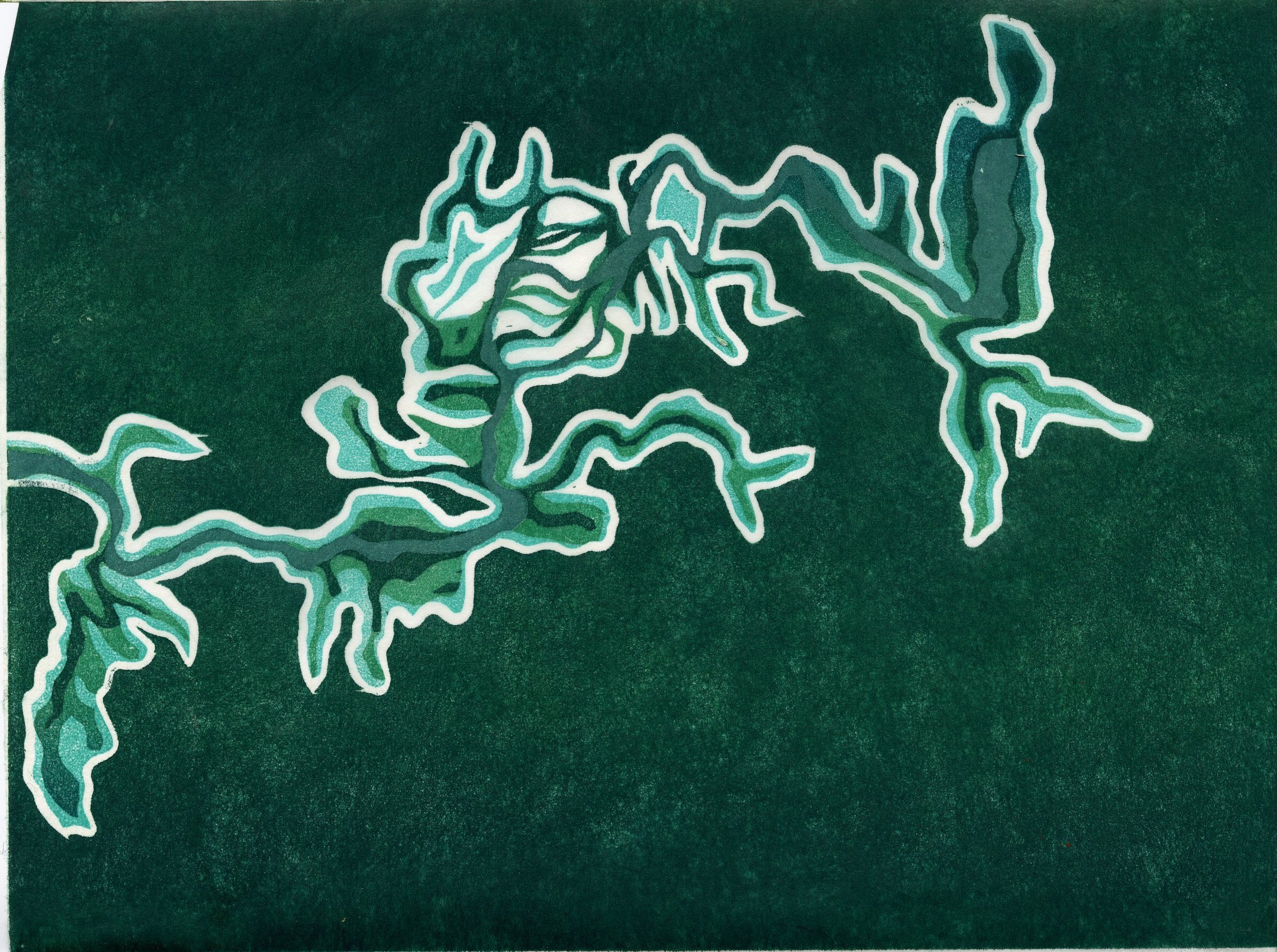
Prehistoric Glacial Lake Missoula once burst its natural dam of ice and flooded the Columbia watershed, leaving channeled scablands in Eastern Washington and sculpting a storied landscape from Montana to the Pacific.
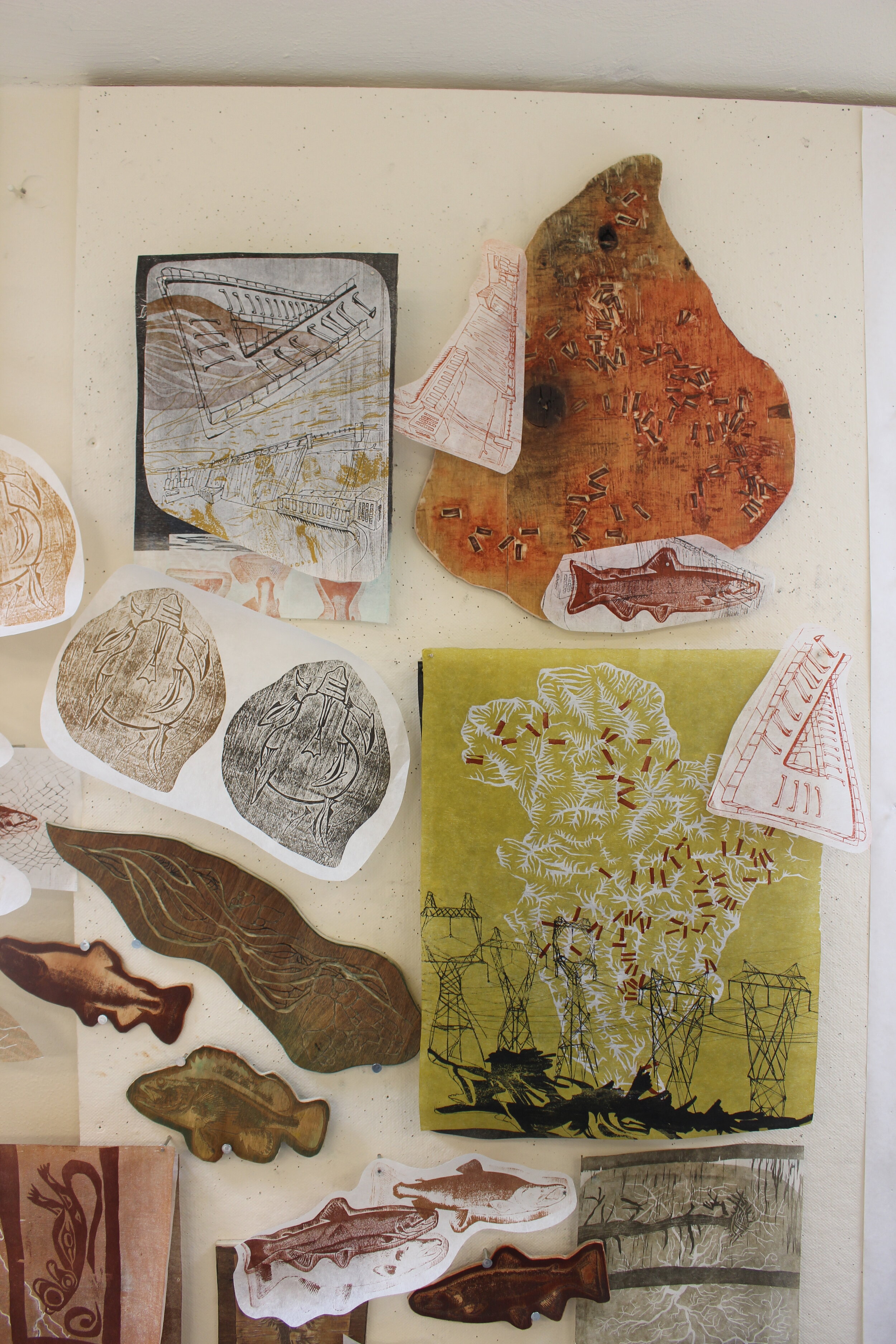
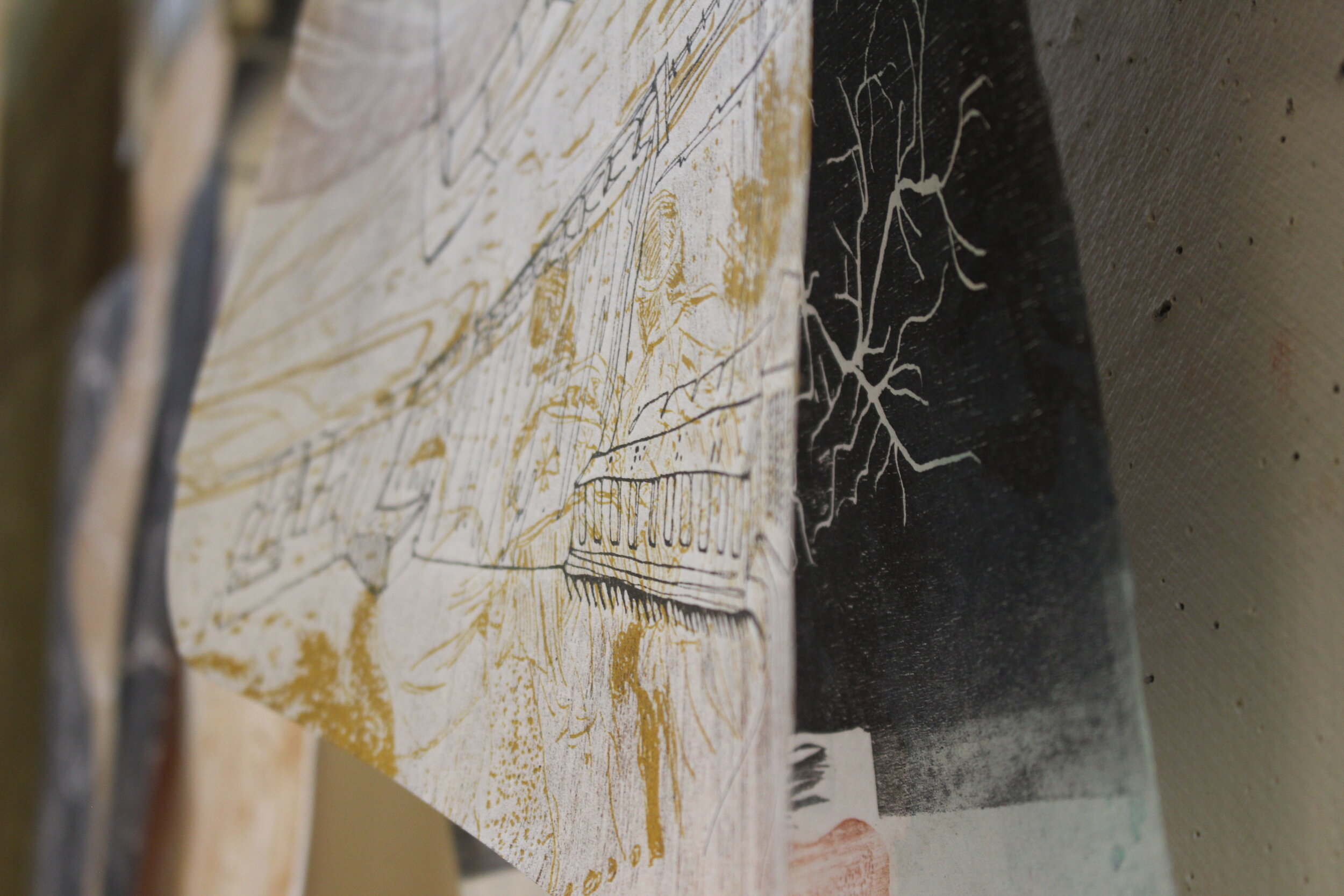
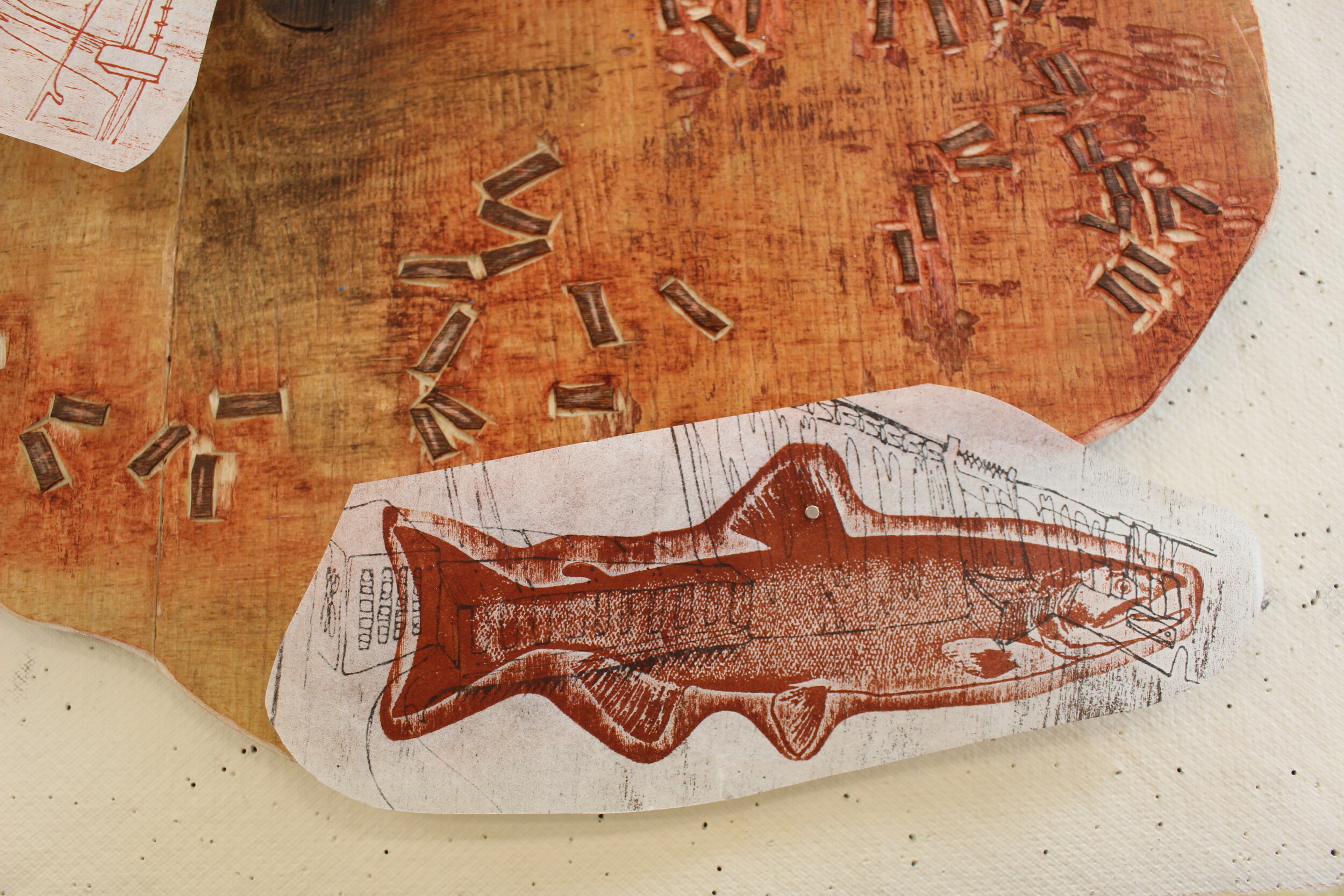
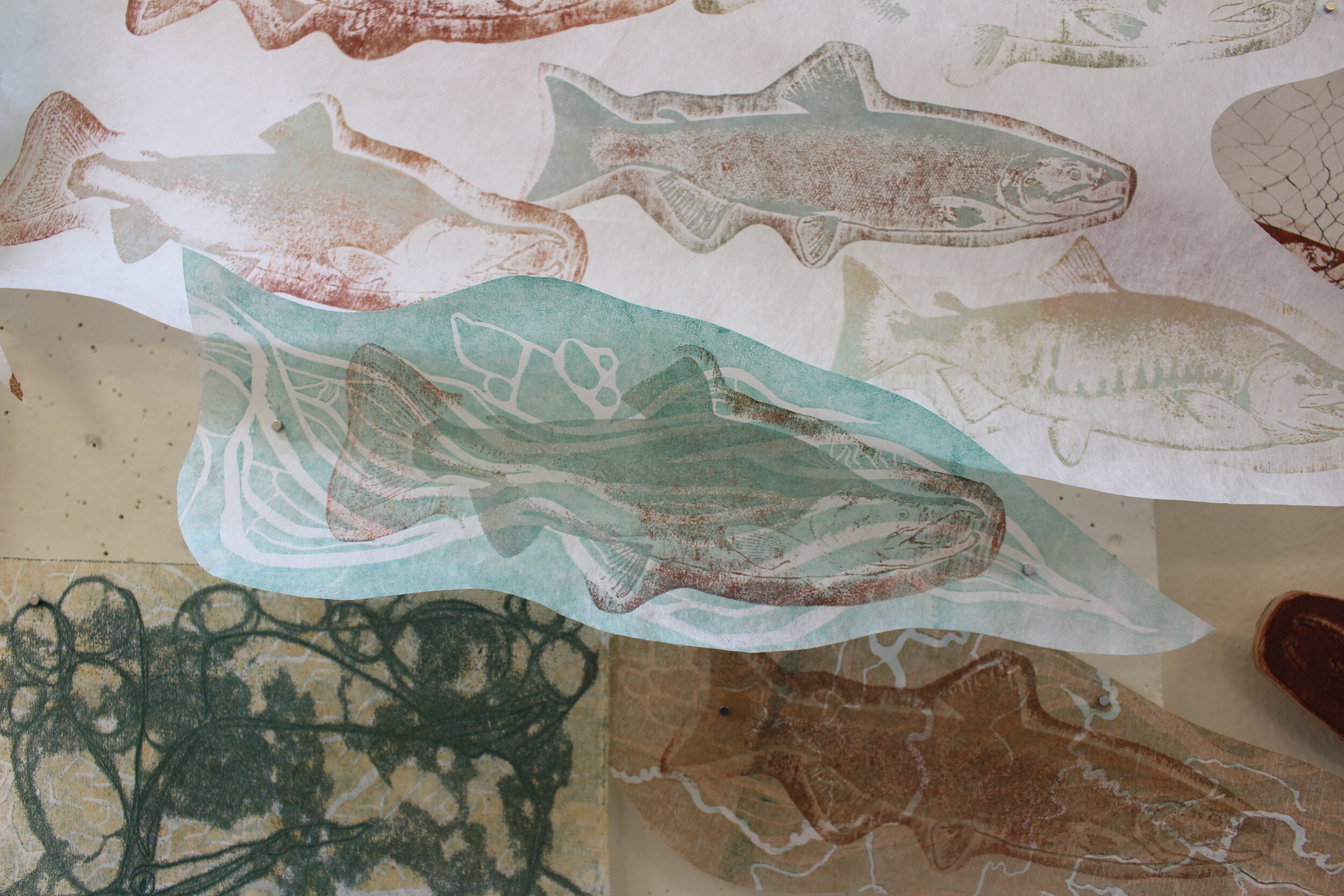
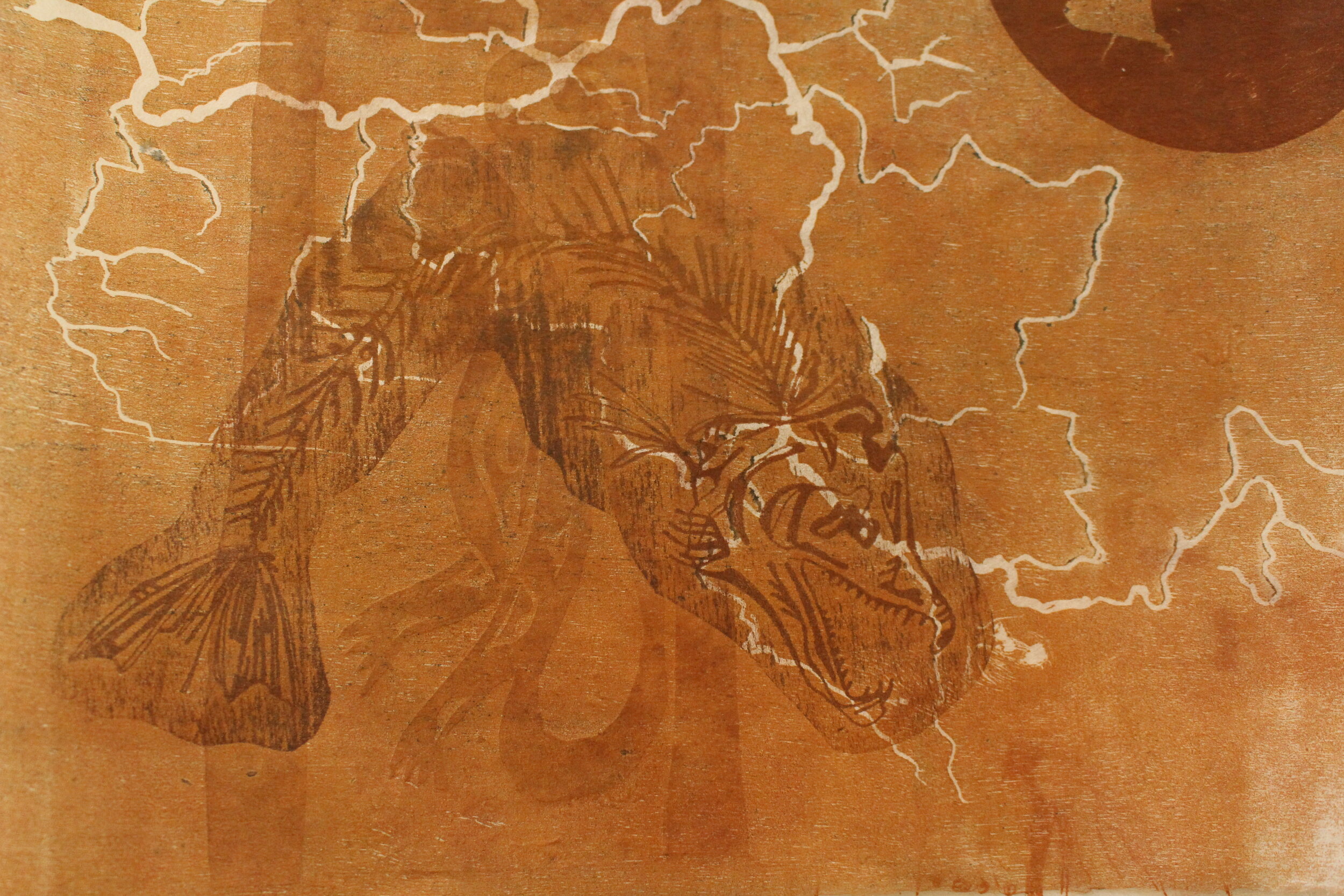

Following the success of the Methow Headwaters campaign, I turned my energy towards the quite endangered Columbia River. Every place I have called home in my life lies eventually drains to the Columbia. I have seen the critters and forests that stock the Columbia’s banks, the stones that line its bed and the mountains that feed it snowmelt.
Over the course of about a month, I hand carved, laser cut and dremmeled into plywood sheets. I amassed a cascade of layered prints. The stories of lost fishing grounds, dam construction, inept fish ladders, and ghost fish kept me striving to depict this river of ceremony and loss, despite its vastness. Mounting the prints of sekishu paper on various levels allowed me to layer views and maps of the river. Eventually, I arranged these into another dynamic shape upon a wall, one that could keep moving.
